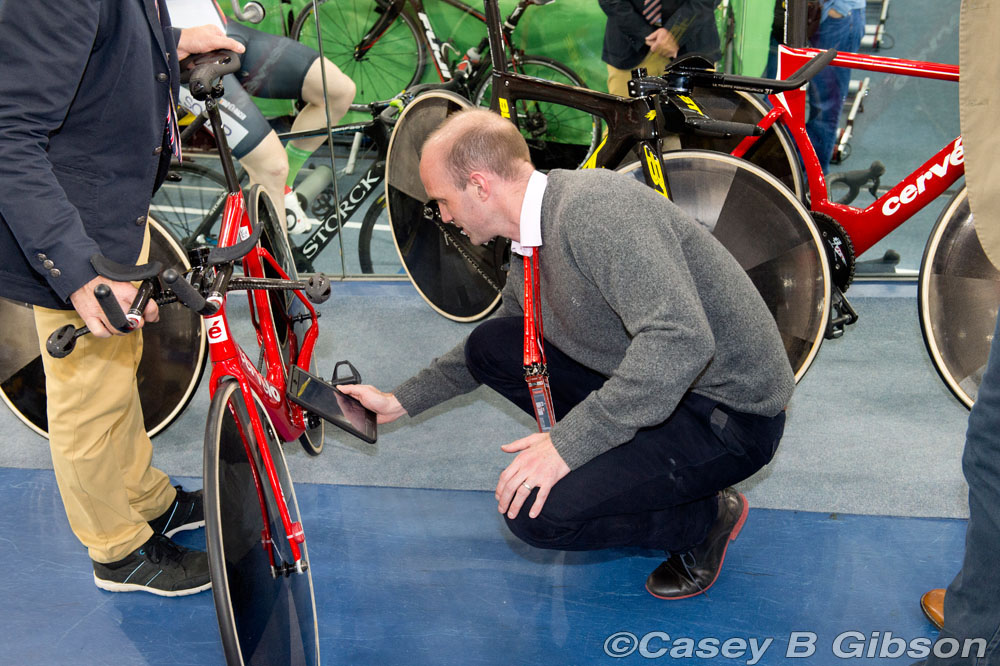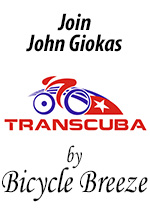April 30/16 16:26 pm - UCI Explains Motor Testing System
Posted by Editor on 04/30/16
The Union Cycliste Internationale (UCI) has confirmed that it carried out unannounced bike checks at the Tour de Romandie on Friday, April 29th, and that no technological fraud was detected. Tests concerned 347 bikes from all teams participating. In total, the UCI has undertaken 507 bike checks at the Tour de Romandie.
These bike checks used the new scanning method which the UCI has been deploying in 2016 and with which it detected a case of technological fraud at the 2016 UCI Cyclo-cross World Championships in Heusden-Zolder (Belgium).

UCI checking for motors at Track Worlds in London
The UCI has already tested bikes at many races in different disciplines this year (for example 274 at the UCI Track Cycling World Championships in London, 164 at the women's Trofeo Alfredo Binda, 216 at the Tour of Flanders, 232 at Paris-Roubaix, 173 at the U23 Liège-Bastogne-Liège). It will continue to test heavily in all disciplines throughout the year.
The new scanning method uses a tablet, case, adapter and custom-made software which enable an operator to test a complete bike, wheels, frame, groupset and other components in less than a minute. The software utilized was created in partnership with a company of specialist developers and electrical engineers. If the scan picks up anything unusual, the bike or component is then dismantled for inspection.
The UCI's trials of the current scanning method showed it is highly effective in detecting hidden motors or any components that could contribute to powered assistance. The scanner creates a magnetic field and the tablet then detects any interruptions to this magnetic field which can come from a motor, magnet or solid object such as a battery concealed in a frame or components.
The scanners have proved to be a flexible, reliable and highly effective tool which enables large volumes of bikes to be tested in short periods. Extensive prototype testing was undertaken in 2015 before Beta testing in the field environment was started.
As it developed this new scanning system during 2015, the UCI also carefully considered and tested alternatives, including thermal imaging, x-ray and ultrasonic testing. These alternatives proved to be much less effective.
Thermal Imaging
This was trialled at the beginning of the UCI's research, as it was believed that it had the potential to be the most useful method. In certain circumstances, thermal imaging can indeed detect a motor, however, only when the motor is in use or just been used and is still warm. This makes pre- or post-race checks ineffective.
Thermal imaging will also pick up heat signals from other sources, including the rider's body, heat generated from friction in bearings and heat from warm tyres. The heat patterns shown on a recent documentary which deployed thermal imaging at a bike race are consistent with normal heat from moving parts. The UCI also found that it is simple and cheap to install effective thermal screening devices which render this kind of testing ineffective. Thermal imaging also only works on line of site and the scan must be alongside a moving bike during the scanning process. For these reasons, thermal imaging was not pursued.
It is worth noting that the case of technological fraud detected at the 2016 UCI Cyclo-cross World Championships would not have been found by thermal imaging as the motor was not running when the check was made.
X-ray
This technology was also trialled but proved to be ineffective due to the complex logistics inherent in its deployment. Although effective in the right conditions, the equipment is cumbersome, expensive, relatively slow and in many jurisdictions subject to regulations which would constrain or prevent its use. Considerable space is required to install x-ray equipment at an event and using radiation in a public environment means that a large surrounding area must be fenced off. A power supply sufficient to run the x-ray equipment is also required. Tests take around three minutes for each bike which must be taken to the specific area where a qualified and authorized operator must be present.
Ultrasonic
This method, widely used in industry to test the density of materials, was also theoretically promising but proved ineffective because of the widely differing thicknesses and density of bike frames and other components. This created calibration issues which would make the method impossible to use in an environment where bikes from many different manufacturers are used and whose methods of fabrication are constantly evolving.
UCI President Brian Cookson said: "Over the past two years we have made a considerable investment of UCI resources to find a method of testing bikes for technological fraud which is flexible, reliable, effective, fast and easy to deploy. We have consulted experts from a wide variety of professional backgrounds - universities, mechanical, electronic and software engineers, physicists - and worked with the best technology available. Our ability to reliably test so many bikes has transformed our work in this area and we will continue to test widely in all our disciplines to ensure that anyone tempted to cheat in this way knows they are highly likely to be caught."
| Return to Canadian Cyclist homepage | Back to Top |




